Description
If you’re in the market to build yourself a custom AR15 or have a company like American Resistance build you a custom AR, there’s some options to think about. While this isn’t all the options, it’s some of the more popular ones that we offer.
When putting your build together, you’ll need to decide on the following parts:
- Caliber, barrel length, purpose?
- Brace or stock?
- Do you want your brace or stock to fold?
- Ratcheting castle nut or staked castle nut?
- What upper and lower receiver do you want?
- Which trigger do you want or require?
- Is your lower parts kit Mil-Spec or upgraded?
- BCG.
- Charging Handle (rear charging or side charging?).
- Handguard preference?
- Muzzle device?
- Optics/Sights?
- Pistol Grips/Foregrips
- Barrel Takedown or Breakdown Kits
- Cerakote choice (optional)
Caliber of weapon, barrel, length?
What’s the purpose of your rifle or pistol? Most likely the answer to this question will lead you in the correct direction for the caliber that best fits your build. If it’s your first AR build, myself like most would recommend the 556/223. If you’re a more experienced shooter and you have a more specific need for caliber such as 300blkout or 9mm for personal protection, or 20” 556 for longer range plinking, then you’ll probably already have a good idea for this. For barrel material, there’s a few options, and these are based on what your plans with the weapon are. For duty weapons or weapons that intend to be used in a harsh combat style environment, chrome-lined and cold hammer forged are the leaders here. Both of these barrels are designed to be used on machine gun type applications. They have extremely long lives as far as round count goes and they can get very hot and not need to cool as often or soon like some of the other options. The rumor in the AR world is that you’re going to sacrifice a little bit of accuracy with these two options. In my personal experience, I’ve used both chrome-lined and CHF and both were able to pull in groups of less than one inch at 100yds, and they’re very capable of shooting sub-moa groups at greater distances. However, if you’re looking to build a precision gas gun that’ll shoot the very best group at great distances, 416R SS is going to be your ticket. The 416R SS is by far the most popular barrel material for long range precision gas gun shooters. Although they don’t have the high round count that a CHF or CL barrel does, they have the ability to reach out and touch targets with precise accuracy and repeatability. If you’re building an AR and you’re not concerned with 20,000rds of barrel life, or hitting a quarter sized target at 300 meters, then you may look at 4140 chrome-moly barrels. These barrels are far more cost effective than either of the before mentioned barrels. Just because they’re more cost effective doesn’t mean that they are less reliable either. The 4140CM will still shoot a sub-moa group, and still has around a 10,000rd life span. Don’t be worried about the 4140 barrel, they’re great, and not all of us can afford the CHF, CL, or high end 416R SS barrels. For twist rates, it really depends on the caliber, weapon purpose, and ammo you want to use.
Barrel weights:
- ARG 5.5″ 9mm: 11.8oz
- ARG 8″ 9mm: 12.3oz
- ARG 16″ 300BLK pistol gas: 1lb 15oz
- ARG 10.5″ 300BLK pistol gas: 1lb 7.4oz
- ARG 10.5″ 556/223 carbine gas: 1lb 4.2oz
- ARG 8.5″ 300blk pistol gas: 1lb 2.1oz
- ARG 16″ 556/223 mid gas: 1lb 11.6oz
- Bison Armory 16″ 6.8SPC mid: 1lb 15.3oz
Buttstocks/pistol braces:
For AR pistols, which have a barrel less than 16″ in length, you’ll need a pistol brace, not a buttstock. There’s two main companies we choose for this: SB Tactical and GearHead Works. SB Tactical has dozens of models to choose from however we’re going to focus on their SBPDW,SBA3, and SBA4 models. All of these pistol braces, are adjustable just like a M4 stock is. The SBA3 & SBA4 both utilize the M4 buffer tube and are compatible with standard or mil-spec buffer springs and buffers. No need for proprietary buffer systems with the SBPDW, SBA4, or SBA3 braces. These three options are comfortable to use, reasonably priced (usually around $120 with an M4 buffer tube on the SBA3/4, and $240 SBPDW), and have the added but not intended use of storing your barrel assembly if you’re building a breakdown AR pistol or Takedown AR Carbine. They have a malleable soft over-mold rubber that the handguard and barrel assembly fit into and can be tightened to ensure they don’t fall out easily during travel and carry. They all come standard with QD sling holes for using weapon slings. GearHead Works makes a few different models as well but only one has caught our attention. The TailHook Mod2 is one of the better solutions for your AR pistol. Just like the SB Tactical SBA3 and SBA4, the TailHook M2 is adjustable. It uses a proprietary buffer tube that ships with the unit. It’s made of injection molded plastic and is very durable and comfortable to use. The only downside to the TailHook is if you’re building a Takedown/Breakdown AR pistol, it doesn’t give you the ability to store your barrel/handguard assembly.
For rifle length builds (16” or longer barrel), the sky is really the limit. You can use any variant of the M4 adjustable stocks. Some of the most noted are Magpul, Bravo Company, B5 Systems, and Hogue. You also have the option of fixed A2 style stocks for those longer barreled, precision gas guns.
Do you want your brace or stock to fold?
If you’re wanting your backend, stock or pistol brace, to have the folding AR option, there’s a few options out there. The most notable, most durable, and over all best option is the Law Tactical AR Folding Stock Adapter Gen3-M. The guys at Law Tactical hit a grand slam with their AR folding device. It’s compatible with all rifle caliber AR15 lowers, all AR10 lower receivers, and some pistol caliber AR’s. For pistol caliber AR’s, the lower receiver will be compatible, however the BCG’s for pistol caliber carbines have some limitations. For the Law Tactical Folding Stock Adapter to be compatible with your PCC carbine, it will need to have a removable weight on the backend. This is due to the Law Tactical’s BCG extension plug needing to be installed to fill the gap that the Law Tactical creates. Let’s not forget to mention that the Law Tactical Folding Stock Adapter Gen3-M is the only folding device that is currently authorized by the US military and carries it’s own NSN number (Patent # 8769855, NSN # 1005016724614). The total weight the Law Tactical will add to your build is 13.3oz.
Stake your castle nut or Ratcheting Castle nut?
Just remember that if you’re using the M4 style buffer tube, instead of staking the castle nut, we strongly recommend as use Primary Weapons System’s Ratcheting Castle Nut kit with QD endplate for that added piece of mind. They only cost $25 and the install and maintenance are much easier than staking the castle nut. Plus, the ratcheting castle nut makes it much easier to remove your castle nut in the even that you want to change or remove your buffer tube assembly.
What lower and upper receiver do you want to use for your build?
The most popular and versatile receivers are made of forged aluminum. For billet upper receivers, they have some limitations on aftermarket mil-spec required parts. For example, the Devil Dog Concepts “Hard Charger” is not compatible with billet upper receivers. The DDC HC was specifically designed for mil spec upper receivers. Our American Resistance AR-15 and AR9 Glock Mag forged lowers and upper receivers are made of 7075-T6 Forged Aluminum. It’s arguable which is stronger billet or forged, and I’m sure there are hundreds of articles on the internet over the differences so we won’t cover them here. We currently only offer forged lowers for AR15 models. For pistol caliber AR’s such are 9mm or 40S&W, we offer forged aluminum or billet aluminum. Billet usually gives you the option of more detailed fancy machine work on the lower or upper, and they do cost a little bit more due to the extra machine work involved. All of our lower receivers have the following features: threaded pin for the bolt catch, threaded pin for the rear take-down pin, tensioning screw for upper/lower. For both our 9mm lowers (billet and forged), there’s a special bonus for you pistol caliber build. The Last Round Bolt Hold Open is a patented (Patent # 10018437) mechanism that guarantees your BCG will lock to the rear after the last round has been fired, just like a AR15 rifle caliber does.
Weights of American Resistance stripped receivers:
- Forged aluminum (rifle caliber AR15): 8oz
- Forged aluminum upper receiver: 6.9oz
- Forged aluminum (pistol caliber 9 & 40): 11.4oz
- Billet aluminum lower (pistol caliber 9 & 40): 11.3oz
- Billet upper receiver (all caliber): 7.1oz
Trigger options:
When choosing the trigger you want to use, be sure to know the capability and requirement for the caliber you’re shooting. If you’re building an AR chambered in 556/223, 300blackout, 6.8SPC, 6.5Grendel, and many others, you’ll have more options for trigger choice. You’ll have pretty much full range of options. However, if you’re building an AR in 9mm, 40S&W, 45ACP, 10mm, or 7.62×39, there’s some limitations due to hammer strike. These calibers require much more hammer strike on the primer for reliable functionality. Most drop-in triggers do not do well with pistol calibers or 7.62×39 due to the amount of hammer strike needed for the primer (unless specified otherwise by the manufacture). CMC Triggers is a great example of this. They make a great drop-in 9mm specific trigger. However CMC’s rifle caliber triggers don’t do so well will pistol caliber builds. HiperFire triggers have some of the best hammer strike, however they don’t work with pistol caliber AR’s. Actually, they’ll fire the round, but they tend to “run away” on the shooter which makes it a very unsafe weapon. If you’re looking into installing a 2-Stage trigger in your build, Geissele Automatics makes the best 2-stage available. My personal choice is the SD-C flat trigger. For pistol caliber AR’s, I have 3 main preferences: ALG Defense ACT Single Stage Trigger, CMC’s 9mm Specific Drop-In, and Mil-Spec standard triggers. For rifle calibers, there’s more choices than I would have time to list. A quick Google search will render lots of information on this or if you want to call in to the shop, I’ll be happy to give my 2 cents on triggers and what ones we prefer.
Lower parts kit options:
For lower parts kits, again there’s lots of options to choose from. The most basic and simple option is a Mil-Spec CNC’d lower parts kit. Be sure to check with the company that you’re getting your LPK from that there’s NO MIM parts in the kit. MIM parts are “metal injection molded”. The MIM process is a cheaper and cost effective process for makes metal parts. However, they are very brittle and can and will break under normal conditions, especially in pistol caliber platforms. Here in our shop, we will not sell or use MIM parts. For aftermarket or upgraded LPK’s, there’s quite of few companies making really good LPK’s. Seekin’s Precision is among the leaders in this sector.
BCG options:
When choosing your BCG, be very careful as this is the component of your build that takes the most abuse. Make sure it’s a quality part, from a quality machine shop. Some things to look for on a BCG are proper staking on the gas key, MPI testing stamp, type of coating, and fitment of bolt into the carrier and cam pin fit. For pistol caliber BCG’s, there’s a lot of variations here. For our 9mm builds here, we have a very specific BCG. We’ve added some key features that keep the doors open for customizing your build later on: Removable weight in the rear to allow Law Tactical Folding Stock Adapters Gen3-M to work, M16 belly side to allow for use with Full-Autos and Fostech Echo ll Binary Triggers, Nitride coating for added slickness, and we’ve increase the weight to help ensure you don’t have “bolt bounce” or “trigger slap”. All of our BCG’s here are properly staked, MPI tested and backed by thousands of rounds of proof in quality.
Weights of BCG’s:
- 556 mil spec: 11.6oz
- 9mm ARG BCG: 14.5oz
Charging handle options:
Just like anything on the AR15, you’ve got tons of options for your charging handle. The most common, and most reliable is the Mil-Spec charging handle. More specifically, make sure it’s “Forged 7075 T6 aluminum”. I’ve personally had really bad results with standard billet charging handles that were marketed and sold as “mil-spec”. Not to say that all billet charging handles are no good, but in my experience, they’re not the best option for a smooth operation and they tend to bend due to being a bit softer. If you’re wanting a side charging upper, you have a few options here too. Devil Dog Concepts makes a one of the best retro-fit side charging handles. They are designed to be used with Mil-Spec uppers, so don’t try to install one if your upper receiver is billet aluminum, it probably won’t fit correctly without modification. Another notable side charging unit is the GIbbz Arms G4 upper. Gibbz’s unit is a integrally built in side charger that is non-reciprocating, and is compatible with standard BCGs (pistol caliber and rifle caliber) without having to modify or drill/tap into your BCG.
Weights of charging handles:
- Mil-Spec Standard: 1.2oz
- DDC Hard Charger: 4.6oz
- Radian Raptor: 1.2oz
Handguard choices:
Handguards options is probably the most plentiful when it comes to your build. First and foremost just like with any AR part or component, DO NOT BUY OR BUILD WITH IT IF IT’S NOT 100% AMERICAN MADE. There are lots of cheap, foreign made handguards out there, they’re not worth the price tag. When making your handguard decision, there’s a lot that can go into this. Free float or Delta ring assembly? What’s the barrel length? Hunting weapon, tactical/duty weapon, or target gun? Do you want the barrel to be tucked inside the handguard so that you can run a suppressor or muzzle device inside? Do the handguard have a large enough inside diameter to fit your suppressor/muzzle device? Do you want MLOK, Quad-rail, KeyMod, smooth tube, or a pica rail on top? These are a few of the main options you’ll need to decide. We know that this part can very tough due to how many options there are and how you want your build to look. There are far too many options to list them out here, so if you have questions, don’t hesitate to call or email us and we’ll be glad to test fit for you get you the look and build you want.
Muzzle devices:
Most AR builds will come standard with the A2 “birdcage” flash hide. However just like everything else on the custom build, you may want to upgrade this. You’ll need to decide how you want the weapon to perform. Do you want a muzzle brake to reduce recoil? Do you want a flash cone/blast re-direction device? Do you want a suppressor/silencer? With most of these options you’ll be looking at, you’ll also need to know what handguard you’re going to use, and if the muzzle device is compatible. Keep in mind, that while muzzle brakes do reduce the felt recoil and muzzle flip, most the time they also make your weapon a bit louder. If you’re wanting a suppressor/silencer, you’ll need to do a Tax stamp package that takes anywhere from 6 weeks to 12 months.
Optics or sights:
When it comes to sights or optics for your build, this a very preference driven item. It really depends on the purpose of the weapon. If you’re planning on doing some longer range shooting, you’ll probably want powered optics such as a 2.5-10×56 Trijicon Accupower Scope or a 4-16×50 Trijicon Accupoint. These are just a couple examples, as there are literally dozens of options here. If it’s a duty weapon or tactical set up, you’re more than likely going to be looking at red dot optics or holographic sights like EOTech’s, Aimpoints, or Trijicon ACOGs. For duty weapons it’s a good idea to have a set up back-up iron sights in case your batteries die or your optic is damaged beyond further use. Just like everything else on your build, make sure it’s coming from a quality manufacture. There’s also great powered optics that can be used as a CQB optics. An example of this is the 1-4, 1-6, 1-8 scopes. These type of scopes have great eye relief that allows for the shooter to use the optic like a red dot optic, but gives you the option to zoom in to 4, 6 or 8 power for a more precise longer range shot. The most neglected optics, Iron Sights, are our personal choice. The reason for this is really quite simple: Technology fails. Batteries die, and glass cracks. Iron sights, when used correctly, can be a very reliable and accurate optic choice. There’s many choices of brands and models to choose from. We prefer the Daniel Defense Fixed sights, Troy’s Flip sight and fixed sights, or Samson fixed sights. These three company’s sights are all metal instead of the common polymer sights. I prefer the metal over poly sights just due to the more rugged durability. With all these iron sight options, we enthusiastically recommend replacing the rear peep sight with Paul Howe’s “CSAT” rear aperture. What’s the CSAT aperture do for you? It has the standard small and large peep holes with an added bonus: Above the small peep is a cut made into the metal that gives you a 2.5″ offset for 7-12 yards. This allows the shooter to not have to account for the 2.5″ offset due to the 100yd zero. You can zero your weapon at 100yds using the small peep, and move to 7 yards and put rounds on target with surgical precision without having to quickly think and account for the offset.
Pistol grips/foregrips:
Again, there’s lots of options here. For pistol grips, we mainly use two grips: Hogue Overmold with finger grooves and beaver tail, and XTech Tactical’s Adjustable grip. There’s plenty more to choose from, it just depends on what you want and prefer. The Hogue and XTech are nicely priced too at around $21 for either. For fore-grips, this can be a bit confusing for some as the legal aspect of it makes it tough. If your barrel is less than 16″, and you don’t have a tax stamp for a SBR or AOW, then you will need a hand-stop, angle foregrip, or some other device that is deemed “not a vertical grip”. For 16″ barrels or longer, there’s no need to worry about legality issues, just pick the one you like and you’re good to go. However for the less than 16″ builds, be very cautious about what item you put on as you could land yourself in hot water with the ATF. If you have questions on this, please send us an email or call and we’ll be glad to help explain your options.
Barrel Takedown or Breakdown kits:
This is an easy choice! After 6 years of building AR takedown weapons, there’s only one barrel quick detach kit that we’ll recommend, the Cry Havoc QRB Barrel Takedown System. We’ve built thousands of weapons using a whole array of takedown components. The Cry Havoc QRB is the winner in this department. Comparing it the competitors out there, there’s really no competition on any aspect. Cry Havoc is the crowned king. There’s a reason why the US military chose the QRB for their weapons: The install on these units is extremely easy, usually less than 20 minutes, the return to zero is flawless, the point of impact shift at 100yds is less than 1/4″, and the gas system is 100% protected. There’s no gas tube left expose to get bent or broke. The CH QRB also gives you the option to use more standard and popular handguards like the American Resistance Custom We The People handguard, BCM Alpha rail, CMMG’s RML’s, and most all slim handguards. The weight of the QRB is 9.6oz. Don’t be fooled by imitations, or cheaper knock offs. Buy once, cry once, pun intended.
Cerakote options:
Cerakote is by far the industry leader when it comes to coating your weapon. First all, there’s no better coating for protecting your weapon from corrosion. Cerakote is a ceramic based paint that is incredibly scratch resistant, and does a great job with camouflage. With 100’s of color choices to choose from, the sky is the limit. Aside from great corrosion protection and scratch resistance, cerakote is used to put that final touch of customization on your build. Check out our gallery here for some ideas for your next build. You can also check out the Instagram page for many more options on patterns and colors: IG page: @americanresistancegear

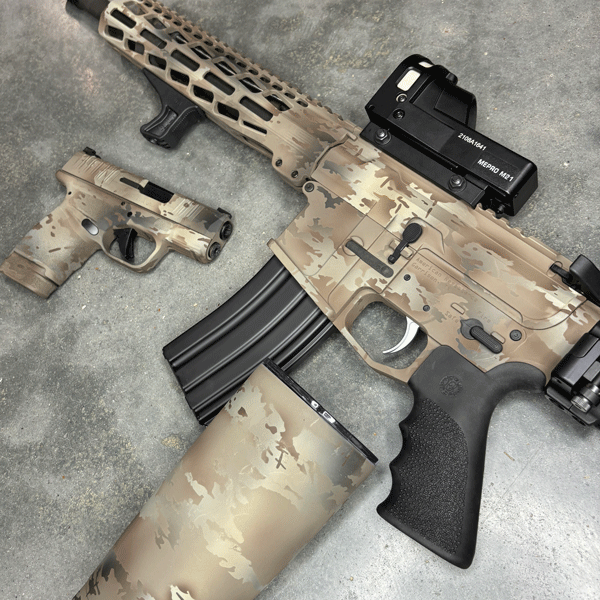


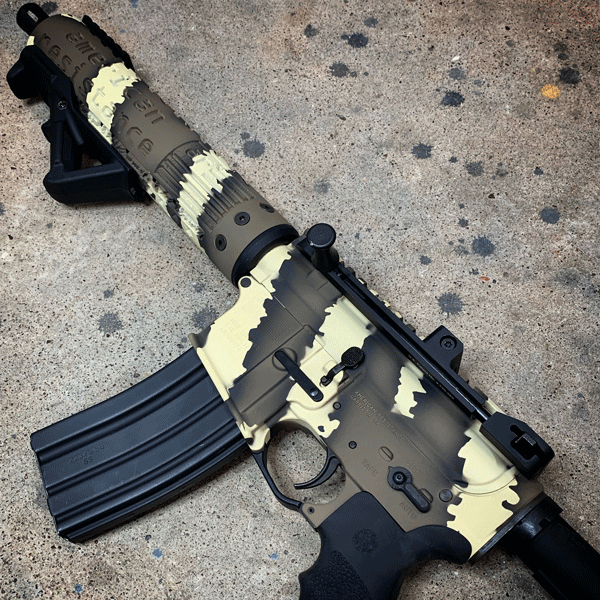

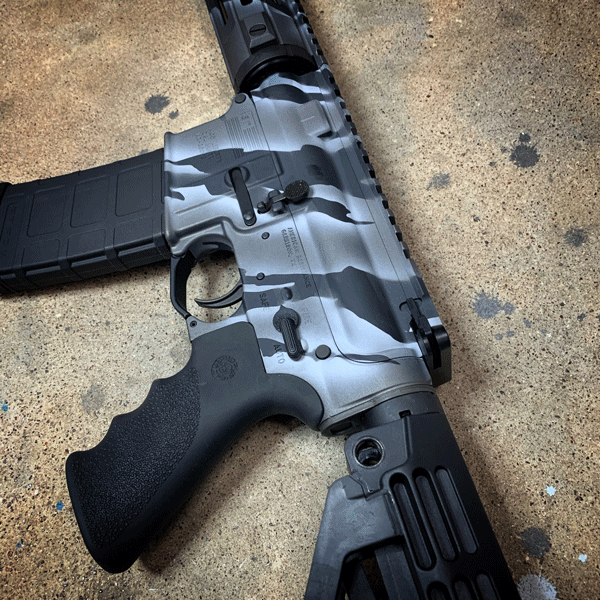


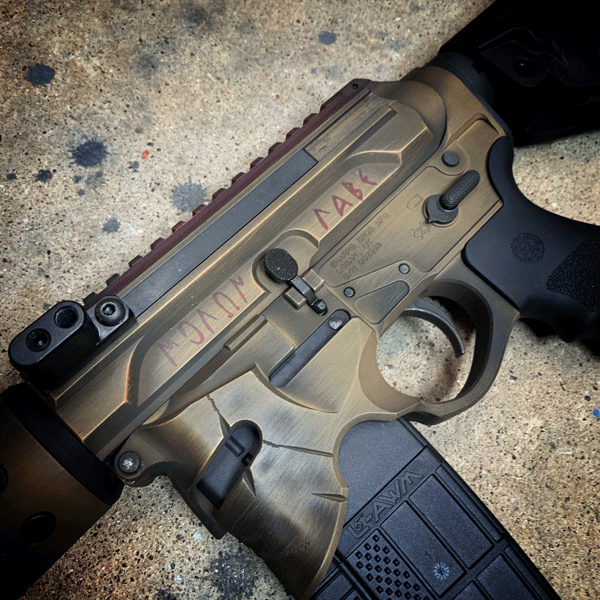




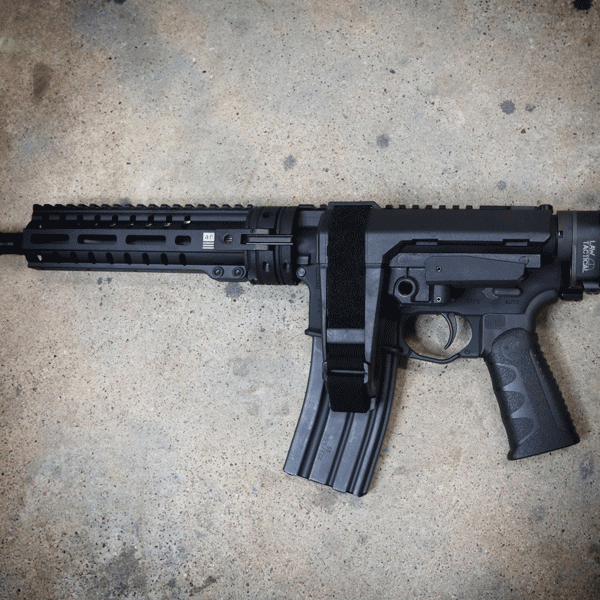
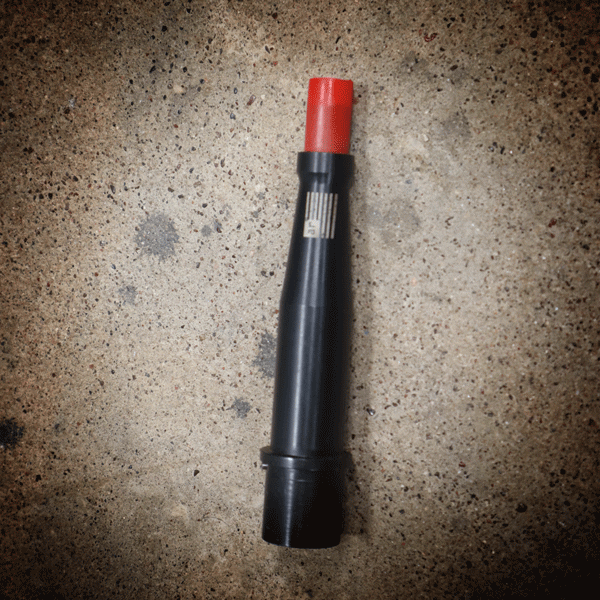

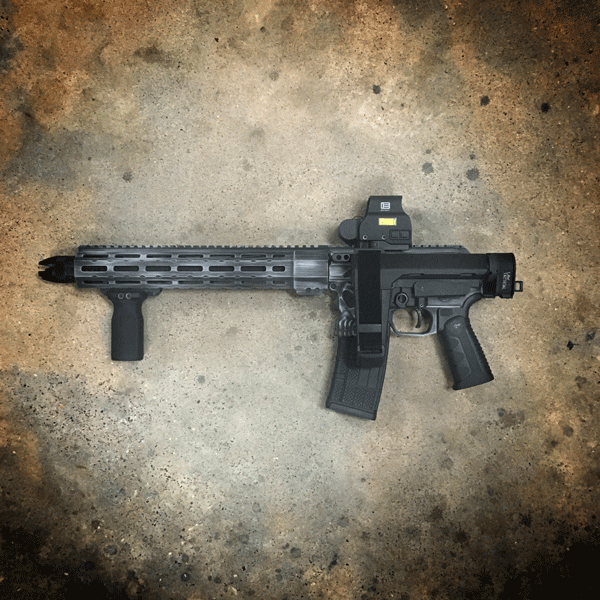




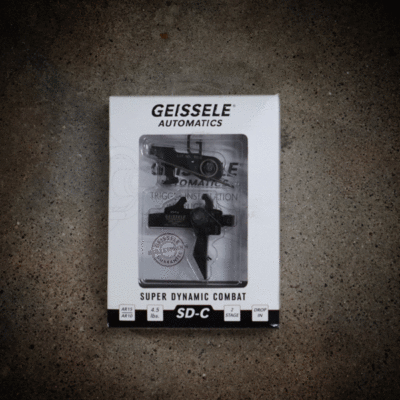
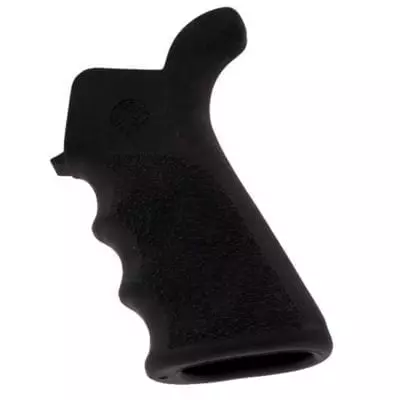
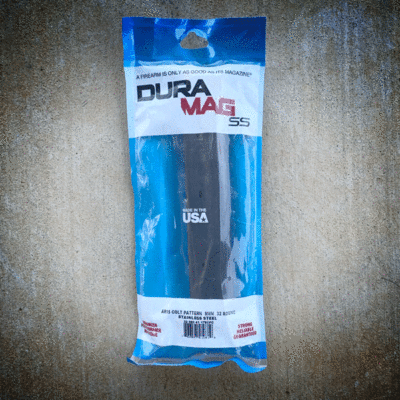
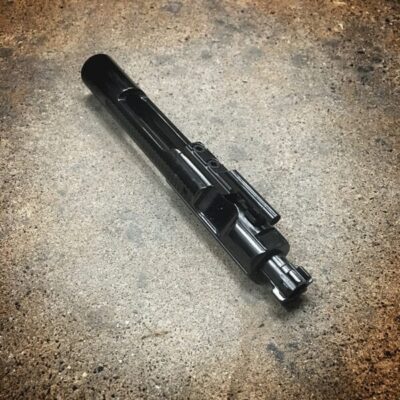
Reviews
There are no reviews yet.